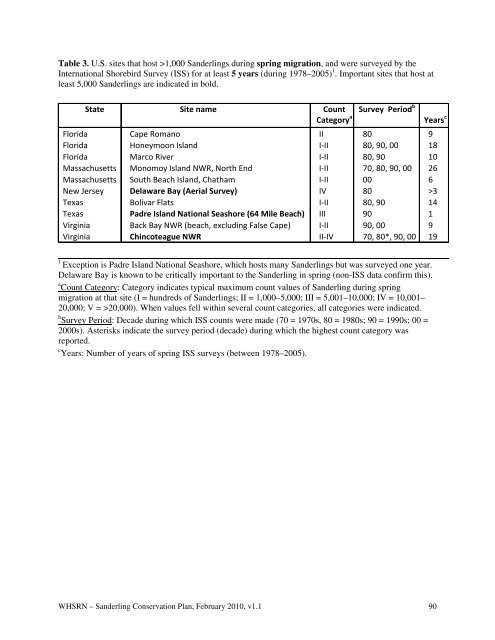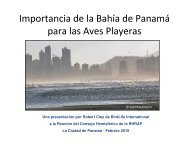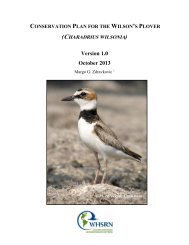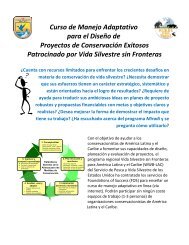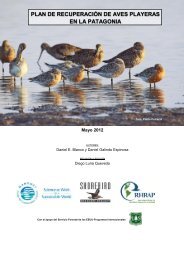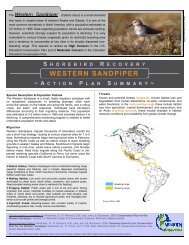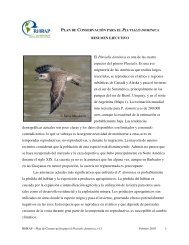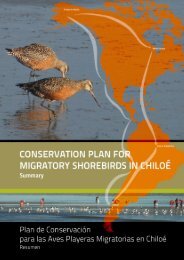Sanderling Plan - Western Hemisphere Shorebird Reserve Network
Sanderling Plan - Western Hemisphere Shorebird Reserve Network
Sanderling Plan - Western Hemisphere Shorebird Reserve Network
You also want an ePaper? Increase the reach of your titles
YUMPU automatically turns print PDFs into web optimized ePapers that Google loves.
Table 3. U.S. sites that host >1,000 <strong>Sanderling</strong>s during spring migration, and were surveyed by the<br />
International <strong>Shorebird</strong> Survey (ISS) for at least 5 years (during 1978–2005) 1 . Important sites that host at<br />
least 5,000 <strong>Sanderling</strong>s are indicated in bold.<br />
State Site name Count<br />
Category a Survey Period b Years c<br />
Florida<br />
Florida<br />
Florida<br />
Massachusetts<br />
Massachusetts<br />
New Jersey<br />
Texas<br />
Texas<br />
Virginia<br />
Virginia<br />
Cape Romano<br />
Honeymoon Island<br />
Marco River<br />
Monomoy Island NWR, North End<br />
South Beach Island, Chatham<br />
Delaware Bay (Aerial Survey)<br />
Bolivar Flats<br />
Padre Island National Seashore (64 Mile Beach)<br />
Back Bay NWR (beach, excluding False Cape)<br />
Chincoteague NWR<br />
II<br />
I-II<br />
I-II<br />
I-II<br />
I-II<br />
IV<br />
I-II<br />
III<br />
I-II<br />
II-IV<br />
80<br />
80, 90, 00<br />
80, 90<br />
70, 80, 90, 00<br />
00<br />
80<br />
80, 90<br />
90<br />
90, 00<br />
70, 80*, 90, 00<br />
9<br />
18<br />
10<br />
26<br />
6<br />
>3<br />
14<br />
1<br />
9<br />
19<br />
1<br />
Exception is Padre Island National Seashore, which hosts many <strong>Sanderling</strong>s but was surveyed one year.<br />
Delaware Bay is known to be critically important to the <strong>Sanderling</strong> in spring (non-ISS data confirm this).<br />
a Count Category: Category indicates typical maximum count values of <strong>Sanderling</strong> during spring<br />
migration at that site (I = hundreds of <strong>Sanderling</strong>s; II = 1,000–5,000; III = 5,001–10,000; IV = 10,001–<br />
20,000; V = >20,000). When values fell within several count categories, all categories were indicated.<br />
b Survey Period: Decade during which ISS counts were made (70 = 1970s, 80 = 1980s; 90 = 1990s; 00 =<br />
2000s). Asterisks indicate the survey period (decade) during which the highest count category was<br />
reported.<br />
c Years: Number of years of spring ISS surveys (between 1978–2005).<br />
WHSRN – <strong>Sanderling</strong> Conservation <strong>Plan</strong>, February 2010, v1.1 90


